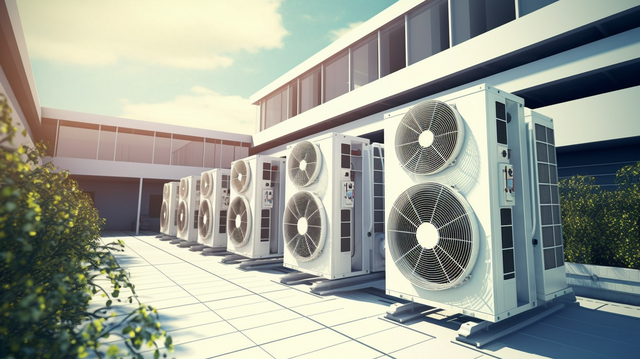
Differences Between ON-OFF and Inverter
Compressors
In cooling and heating systems with a capacity of up to ۳ tons of refrigeration, rotary compressors are commonly used. These compressors are generally divided into two main types: ON-OFF and Inverter compressors.
Below is a comparison of these two types in terms of power consumption and type of refrigerant used.
ON-OFF Compressors
In this type of compressor, the system operates through complete switching on and off.
When the room temperature reaches the set point, the compressor stops. If the temperature rises again, it restarts with a high inrush current—typically about ۲.۵ times the rated current.
This repeated on-off cycling causes:
- High power consumption due to frequent start-up currents,
- Increased compressor wear and tear,
- Temperature fluctuations inside the room.
Inverter Compressors
Inverter compressors use variable-speed technology, allowing the compressor speed to adjust according to the required cooling or heating load, instead of turning completely off.
This provides several advantages:
- Significant reduction in power consumption,
- Elimination of high start-up currents,
- Longer system lifespan and more stable indoor temperature.
Comparison of Refrigerants Used
In Iran, two types of refrigerant gases are mainly used in residential split air conditioners:
R22 and R410A
R22:
A single-component refrigerant with good efficiency. However, due to its ozone-depleting potential, it has been banned in many countries, including European and American markets. Its use is therefore not recommended.
R410A:
A binary blend with a higher working pressure compared to the obsolete R22.
It offers better performance at moderate temperatures. However, in case of leakage, the entire refrigerant must be evacuated and recharged with the correct ratio, as it’s unclear which component escaped in greater proportion.
This refrigerant is not ideal for tropical climates, unless the compressor and system are specifically designed for such conditions.
R134a:
A single-component refrigerant commonly used in the automotive industry.
Although it is more environmentally friendly than R22, it has lower cooling efficiency and requires larger system components for equivalent capacity.
Therefore, it is not recommended as a direct replacement for R22 in residential split systems.




